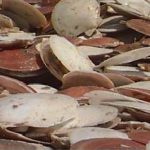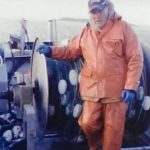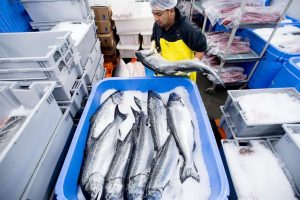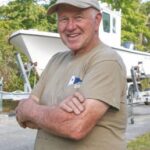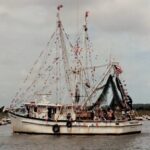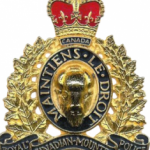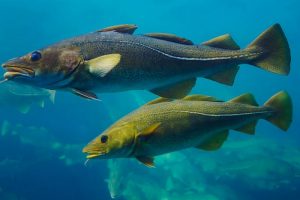Tag Archives: Oregon

F/V Mary B II: Coast Guard owes the public answers
It has been more than four years since the deadly capsizing of the crabbing vessel FV Mary B II while it attempted to cross the Yaquina River bar inbound in stormy weather, killing the skipper and two crew members as Coast Guard vessels were nearby. The captain had previously operated off New Jersey and wasn’t familiar with Pacific Coast conditions. At the time of the hearings, the lead Coast Guard officer said a report was expected before May 2020. However, almost four years have now elapsed since the hearing and the Coast Guard has not released its final investigation report publicly. >click to read< 11:42
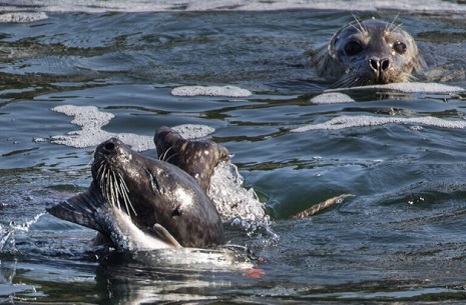
Battle over endangered fish has led Oregon to cull sea lions
While sea lion populations in the Pacific Northwest have soared in recent decades, salmon and steelhead numbers have not. And sea lions’ voracious appetite for salmon is the issue at hand. Many of the fish that sea lions eat are among 13 threatened and endangered runs protected under the federal Endangered Species Act. And groups of sea lions have taken to simply waiting at the Bonneville Dam, Willamette Falls and other pinch points where the fish gather as they struggle to make their way upriver to spawn. The Oregon Department of Fish & Wildlife estimates that sea lions eat up to 44% of the Columbia River spring Chinook run and 25% of the Willamette winter steelhead run each year. Video, >click to read< 09:11
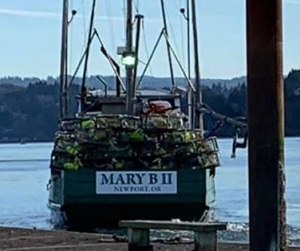
F/V Mary B II: Why Coast Guard sluggishness?
It has been more than four years since the deadly capsizing of the crabbing vessel F/V Mary B II while attempting to cross the Yaquina Bay bar inbound in stormy weather on Jan. 8, 2019, killing the skipper and two crew members as Coast Guard vessels were nearby. A Coast Guard Marine Casualty Investigation board convened in Newport, May 13-17, 2019, and soon revealed the captain had alcohol and methamphetamine in his system and one crew member had cannabinoids. The captain had previously operated off New Jersey and wasn’t very familiar with Pacific Coast conditions. >click to read< 13:03 Search Results for F/V MARY B II
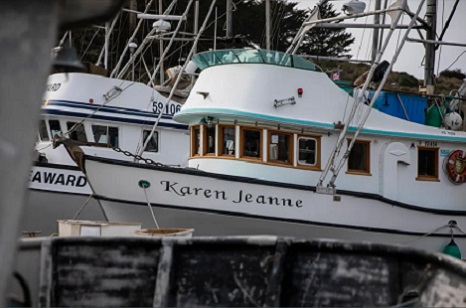
California could have avoided salmon season shutdown. Did we learn nothing last time? by Sarah Bates
I fish salmon commercially from Fisherman’s Wharf in San Francisco. You can see the Golden Gate Bridge from my boat, where Chinook have passed for millions of years on their journey from the ocean, through the bay and Delta, up the Sacramento River. There is communal anticipation before the first trip of the summer, checking anchor winches and hydraulic hoses, safety equipment, leaders, weather reports. Boats are freshly painted and deck tanks for holding fish are installed. Not this year – this year feels like a funeral. >click to read< by Sarah Bates 09:52
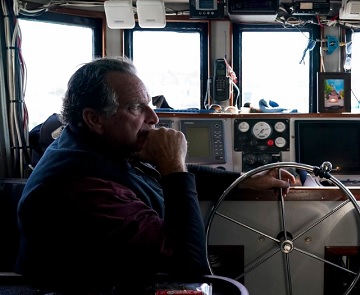
Pacific Fishery Management Council approves salmon fishing ban for much of West Coast
A federal regulatory group voted Thursday to officially close king salmon fishing season along much of the West Coast after near-record low numbers of the fish, also known as chinook, returned to California’s rivers last year. The Pacific Fishery Management Council approved the closure of the 2023 season for all commercial and most recreational chinook fishing along the coast from Cape Falcon in northern Oregon to the California-Mexico border. Limited recreational salmon fishing will be allowed off southern Oregon in the fall. Biologists say the chinook salmon population has declined dramatically after years of drought. Though the closure will affect tens of thousands of jobs, few are opposed to it. Many fishers say they want to take action now to guarantee healthy stocks in the future. >click to read< 09:03
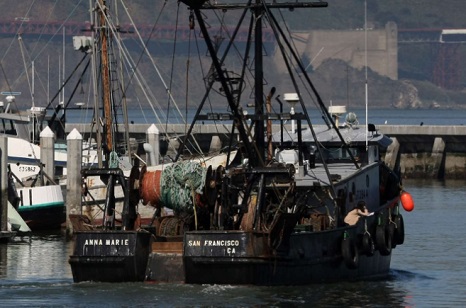
Oregon Fishing Industry Fed Up With Agency ‘Ignoring’ Their Offshore Wind Concerns
The West Coast Seafood Processors Association, the Midwater Trawlers Cooperative and the Oregon Dungeness Crab Commission claim their concerns about proposed offshore wind project call areas, areas where the agency is seeking public comment, and their impact on key fish populations due to the turbines’ electromagnetic field (EMF) cables, have been ignored by BOEM. They also worry about the impact offshore winds would have on their businesses and the entire state’s economy. “BOEM has told us that if Oregon doesn’t want this, they will back off and pursue other offshore wind areas, and we’ve made it pretty clear to them that Oregon doesn’t want this, and they’re still pushing forward,” Lori Steele, executive director of the seafood trade group West Coast Seafood Processors Association, told the DCNF. “They are giving us nothing but lip service,” she added. >click to read< 09:43
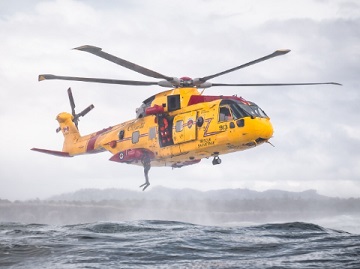
Vancouver Island military search and rescue crews train with U.S. Coast Guard
Crews from 19 Wing Comox are back on the ground after attending a week of specialized training in the United States, learning special techniques to get in and out of extreme ocean waves. “It was awesome to be able to train in a more realistic environment, out of our normal rules,” said Master-Cpl. Carl Mozienko of Comox’s 442 Transport and Rescue Squadron. Three pilots, two flight engineers and three search and rescue technicians, spent five days training with members of the U.S. Coast Guard down in Astoria, Oregon, near the mouth of the Columbia River. The location was chosen because of its rough seas, according to Brad Pigage, a chief aviation survival technician for the Advanced Helicopter Rescue School. Photos, >click to read< 12:47
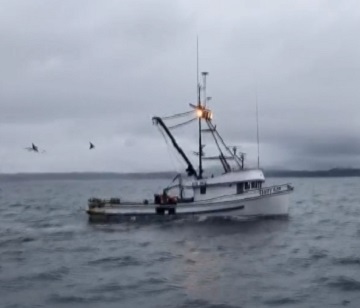
Imperiled Chinook salmon runs close ocean fishing off California, much of Oregon
The closure currently runs through May 15 and affects a length of the coast stretching from Oregon’s Cape Falcon, near Cannon Beach, south to the Mexican border. And it could be extended, officials said, as the imperiled species struggles amid a long-running drought. Further closures are likely, said Eric Schindler, head of the Oregon Department of Wildlife’s Ocean Salmon Program.“It doesn’t look good for this year or next year, and possibly the year after that, because of the drought conditions in California,” Schindler said. “We have to make sure that we’re not undermining our ability to produce salmon for the next go around.” Video, >click to read< 10:35
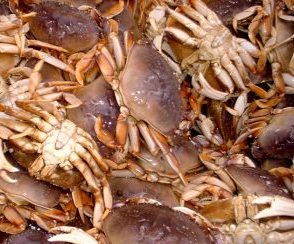
California crabber accuses processor of price fixing
A Portland, Oregon seafood processor, the country’s largest, faces an antitrust class action over what the lead plaintiff says is an egregious case of price fixing in the West Coast’s increasingly unstable Dungeness crab market. Fisherman Brand Little of Auburn, California, filed a putative class action Monday accusing the $945 million company with fixing the price of the highly sought after Dungeness crab, which is found along the coasts and bays between Central California and Alaska. Little says Pacific Seafood, which is owned by Frank Dulcich, the grandson of the company’s founder, has “for at least the last four years, and likely substantially longer” fixed the prices paid to the region’s crabbers. That has in turn dramatically reduced the amount of money earned by the crabbers and priced out customers during the peak demand period while forcing them to buy frozen crab from the previous year, also supplied by Pacific Seafood. >click to read< 12:21
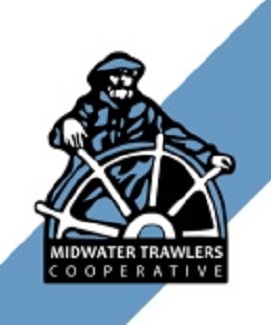
Pacific Fishery Management Council says Rescind Oregon OSW Call Areas
The Pacific Fishery Management Council acted today to join a chorus of voices recommending the Bureau of Ocean Energy Management rescind the current Oregon call areas designated for floating offshore wind energy development. Heather Mann, Executive Director of the Midwater Trawlers Cooperative and one of the leaders of the informal coalition Protect US Fishermen said in her testimony, “we hear the climate crisis is so severe that collateral damage to birds, whales, the California current ecosystem, food security, even to fisheries, fishermen and rural community economies is an accepted part of the transition to cleaner energy. That is an unacceptable premise to me, and I hope it is to you as well.” The motion passed unanimously (10-0) with four abstention votes cast by the state representatives for Oregon, Washington, and California as well as the NMFS representative. >click to read< 19:24
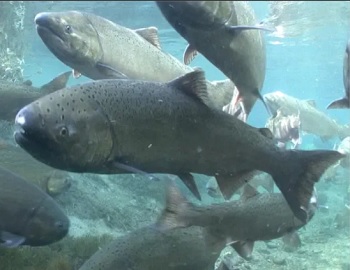
Oregon fishing season called off due to dwindling salmon populations
An extremely low “abundance” of California Chinook salmon stocks and projected low spawning escapements has led to the cancellation of the upcoming commercial and recreational salmon fishing season along most of the Oregon coast. Thursday’s announcement came in two parts from the Oregon Department of Fish and Wildlife, with both actions canceling fishing seasons between March 15 and May 15, 2023. According to Fish and Wildlife, the action applies to all commercial ocean troll salmon fishery seasons from Cape Falcon to the Oregon-California Border. Meanwhile, recreational salmon fishing has been canceled in ocean waters between Cape Falcon and Humbug Mountain off the Oregon coast. >click to read< 08:45
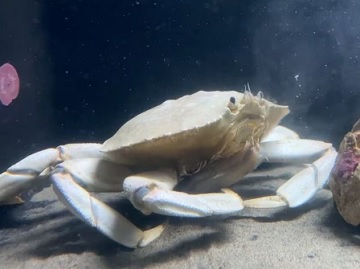
Too Cool for Dinner! White Dungeness crab caught near Seaside is a 1 in 2 million find
A rare all-white Dungeness crab caught off the Oregon coast was spared the dinner plate and donated to the Seaside Aquarium, where staff have fittingly named him … Sour Cream. The crab isn’t actually albino: He has black eyes. Rather, Sour Cream has a rare genetic condition called leucism, which causes a partial loss of pigment. Tiffany Boothe, assistant manager at the Seaside Aquarium, said Sour Cream appeared in a local commercial fishing boat’s crab pot about a month ago. “They kept him separate because it was such a unique crab, and they hadn’t really seen one before,” Boothe said. “When they got in, they just gave us a call to see if we’d be interested in him. They thought he was too cool for dinner.” >click to read<17:26
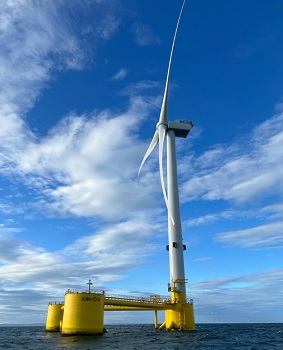
Panel discusses impact of offshore wind on West Coast fisheries
The Biden administration has called for deploying 30 gigawatts of offshore wind energy to combat climate change by 2030. Depending on where the turbines are placed, they could displace highly productive fishing grounds that account for billions of dollars and thousands of jobs in Oregon, Washington and California. Projects must be planned carefully using the best available science to mitigate potential damage, according to a panel of experts who spoke March 1 at the Northwest Offshore Wind Conference in downtown Portland. >click to read< 11:52
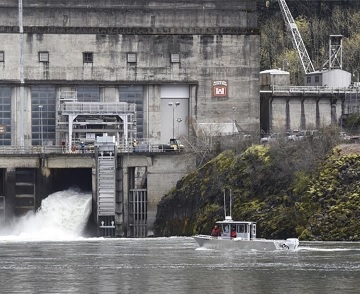
Sea lions threaten Northwest’s salmon – Pinnipeds eating thousands of at-risk fish in Columbia River
Decadeslong efforts by state and tribal agencies have slowly curbed sea lion populations in the region, yet officials still consider the pinnipeds a threat to at-risk salmon populations in the Columbia River. Between August 2021 and May 2022, officials estimate, more than 7,000 fish in the Bonneville Dam tailrace were killed by Columbia River sea lions, according to the Portland U.S. Army Corps of Engineers’ 2022 predation report. This totals about 12.4% of the salmon run accounted for during the agency’s observation period. Dozens of sea lions congregate at the dam in the fall, winter and spring. They feast on chinook, steelhead and coho salmon, as well as sturgeon and other fish. Spring chinook salmon were disproportionately affected, accounting for roughly 4,400 of the 7,000 fish killed. >click to read< 07:55
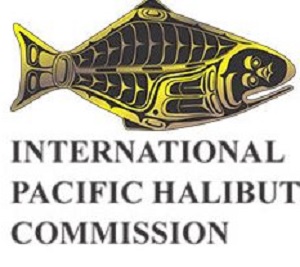
Commission cuts halibut limits across Alaska, Canada
The International Pacific Halibut Commission adopted its annual catch limits for halibut in 2023 from California to the Bering Sea at its meeting Jan. 27. Coastwide, the total constant exploitation yield, a term for how many total halibut longer than 26 inches are removed from the population, regardless of reason, is just shy of 37 million pounds, a 10% drop from 41.2 million pounds last year. Every regulatory area received a cut except for 2A, which covers California, Oregon and Washington. Area 3A, which covers the central Gulf of Alaska, and area 4A, which covers the eastern Aleutians, saw the largest cuts at 17% each. Southeast Alaska only saw a 1% cut, while the western Gulf, western Aleutians and central Bering Sea each saw 6% cuts. The Canadian coast saw a 10.3% cut. >click to read< 11:50
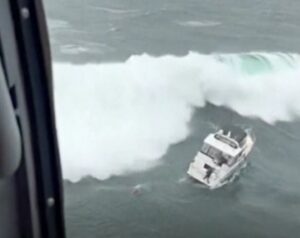
Coast Guard swimmer describes rescue of alleged Ore. yacht thief and ‘Goonies’ prankster
On the morning the U.S. Coast Guard in Astoria received a frantic mayday call from a yacht sinking near the treacherous mouth of the Columbia River, John “Branch” Walton was in his fifth and final day of advanced training as a rescue swimmer. Walton and his classmates leapt at the chance to respond. But it was a quick game of rock-paper-scissors that settled which swimmer would plunge into the churning, frigid waters nearby. Walton won. He was the least experienced of the bunch. Unbeknownst to the 22-year-old who learned to swim only after joining the Coast Guard a few years earlier, he’d soon execute a very difficult rescue seamlessly. And he would be thrust into the national limelight as millions viewed video of his first real-world rescue, taken from a camera mounted to the Coast Guard helicopter that flew him to the imperiled boater. >click to read< 10:29
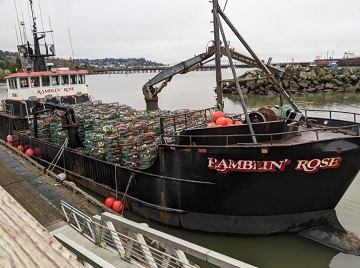
Crab fishermen weather a bruising season
It was a dream season for Oregon’s Dungeness crab fishery last year. Fishing began on the traditional Dec. 1 opener for the first time in years. Domoic acid, a marine toxin that has hampered the valuable commercial fishery time and again in recent years, was almost nowhere to be seen in Oregon or Washington state waters. “Last season, everything that could go right went right,” said Tim Novotny, executive director of the Oregon Dungeness Crab Commission. “And this year — I don’t know if it’s been completely the opposite, but it’s been close.” >click to read< 07:22
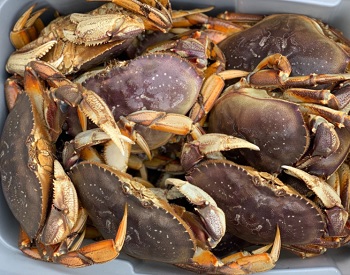
Oregon’s Late Dungeness Crab Seasons Create Challenges for Crabbers, Restaurants, and Diners
The impact is felt strongest by Oregon’s 423 commercial crabbers who depend on Dungeness for a substantial portion of their annual revenue. Tim Novotny, executive director of the Oregon Dungeness Crab Commission, said that Dungeness is easily the most profitable of Oregon’s fisheries, and while many crabbers are able to harvest shrimp or rockfish in the off-season, the uncertainty heading into the critical crab season in December is especially stressful. “They’ve got to try to find a way to keep their crew busy and fill out the payroll,” Novotny said. “It’s very harrowing during that time period. They’ve gotten used to these delays, but it’s still very uncomfortable and full of angst.” >click to read< 08:32
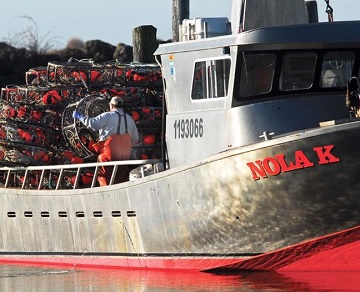
Storm clouds gather over local crabbing fleet
The morning was frozen, clear and calm, far better than many “dump days.” Sunday marked a first chance to start making some money after two months stuck in port. Most crabbers wouldn’t have been to bed overnight before placing their first pots. Some squeeze in more dump runs before Wednesday morning, Feb. 1, when a nearly nonstop frenzy of harvest and delivery will commence and last for weeks. With little or no sleep leading to exhaustion, the Dungeness fishery off Washington and Oregon is among the most dangerous jobs in the country. Winter weather and ocean conditions can be crazy. Fatalities are all too common, while crabbers barely bother mentioning all the back injuries, damaged fingers and a litany of other mishaps. Even so, there are plenty of local guys who don’t want it any other way. They see risk as the price of freedom. >click to read< 07:48
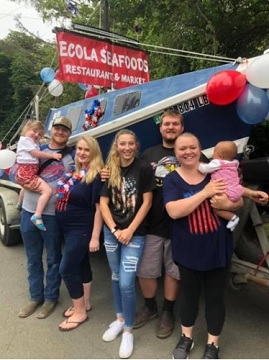
Go wild and get hooked at Ecola Seafood Restaurant and Market
Jay and Cindy first met in the summer of 1978. While Jay was attending Beaverton High School, at the age of 15 he and his friend John purchased a dory and began commercial fishing off the beach at Gearhart. They had no idea what they were doing, but followed a group of local fishermen as they launched into the surf. After living in other states, Cindy’s love of the north Oregon coast led her back to this area. They were married in 1991, with their first child Ashley born in 1994. In 1993 they were selling their catch to various businesses, including Ecola Seafood in Ecola Square Mall on Hemlock Street. The owners were tired and ready to call it quits. Jay and Cindy became the new owners of the small Ecola Seafood fish market and restaurant. >click to read< 09:47
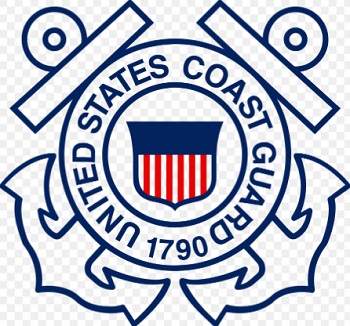
Coast Guard pursues civil penalty for AIS violation
The Coast Guard is pursuing a civil penalty Friday with a maximum punishment of $41,093.00 against a commercial fishing vessel for violating Automated Identification System (AIS) regulations near the mouth of the Columbia River Dec. 3, 2022. Coast Guard Sector Columbia River detected a commercial fishing vessel deactivate its AIS while underway near the mouth of the Columbia River in violation of 33 Code of Federal Regulations 164.46(d)(2). The captain declined to accept the Notice of Violation, issued for $5,000. Now the case has been referred to a Coast Guard Hearing Officer, with a maximum penalty of $41,093.00. As this remains an active investigation, the Coast Guard is not currently releasing the name of the suspected violating vessel. >click to read< 19:29
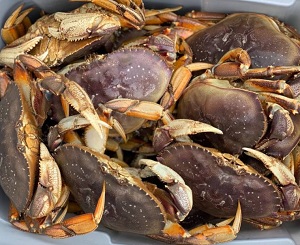
Southern portion of Oregon’s commercial Dungeness crab fishery opens
Commercial Dungeness crab fishing opens Feb. 4 on the remaining southern portion of Oregon’s coastline from Cape Arago (just south of Charleston) to the California border. The earliest a crab season may start is Dec. 1 pending meat fill and biotoxin results. This year, the season opener was delayed due to crab in some areas with low meat fill or high domoic acid levels in crab viscera (guts). It opened Jan. 15 from Cape Falcon to Cape Arago and opens Feb. 1 from Cape Falcon to the Washington border. While the announcement today opens the season Feb. 4 from Cape Arago south, the BMZ location and timing will be dependent on results of on-going biotoxin testing. >click to read< 07:41
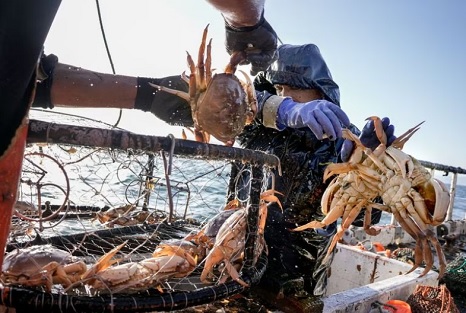
How valuable, and volatile, crabbing can be along the Oregon Coast
On a calm morning last May, the three-person crew of the FV Misty dropped into the Pacific Ocean off of Port Orford, in Southern Oregon, to catch a small piece of a large fortune. It’s not easy money though, by any stretch. A day of pulling in hundreds of crab pots is relentless and fast-paced work, requiring razor-sharp choreography from a seasoned crew. Boat captain Aaron Ashdown can remember joining the family business when Dungeness crab was worth $2.50 per pound in starting price. “My dad told me, because a crab is about maybe two pounds, ‘There’s just little $5 bills all over the bottom of the ocean and all we got to do is go out there and pick them up.’” By the 2022 season, that value had risen to a record $5 starting price, unprecedented for Oregon. Interesting video, photos, >click to read< 11:06
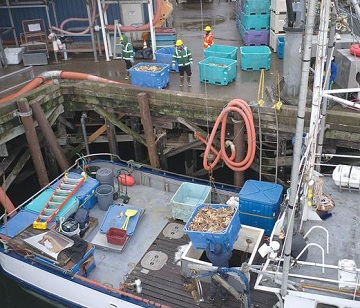
Boats begin offloading crab
After a month-and-a-half delay, Oregon’s commercial Dungeness crab season is underway along at least part of the coast, and crab boats have been busy, already hauling significant catches back to port to be offloaded at the docks. Tim Novotny is the executive director of the Oregon Dungeness Crab Commission, an industry-funded agency established by the Oregon Legislature in 1977 to serve as an advocate for the crabbing industry. When Novotny was asked for his initial thoughts on this year’s season, he said, “It’s been a ball of yarn,” adding that it’s pretty much the opposite of last year. Photos, >click to read< 07:57

Oregon: First Dungeness crab catch of the season
Commercial crabbing season has officially begun in Eugene, as the first shipment of Dungeness crab arrived at the Fisherman’s Market Tuesday night. “This is as late as its ever opened. There was a few years back when it opened on the 15th as well, but it’s much later than normal,” said Ryan Rogers, owner of Fisherman’s Market in Eugene. The reason for the delay? Concerns over the quality of crab in other parts of the west coast. Rogers says, “It’s always crab season somewhere for us. I’ll drive to Blane, Washington, to Bodega Bay to get crab.” Video, >click to read< 10:41
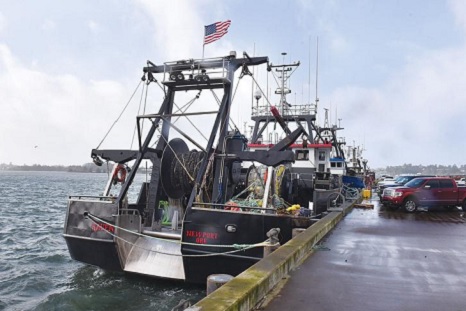
Fishing boats depart for Alaska – Local crabbers begin dropping pots for season opener
A number of the larger commercial fishing boats that call Newport’s Yaquina Bay their home headed out this week for the annual trek to Alaska’s Bering Sea. It can take eight to 10 days for them to make the journey up north, depending on the weather. Boats from Newport will be docking either at Dutch Harbor or Kodiak, where they will be based while fishing for pollack and cod, a fishery that generally lasts for several months. The Port of Newport’s International Terminal was hopping with activity this week as boat owners and their crews made final preparations. In addition to the Alaskan fleet getting ready to head north, local commercial crabbers were busy loading their gear in preparation for the opening of the season this Sunday, Jan. 15. >click to read< 08:40

Commercial Dungeness crab season opens January 15
The Oregon Department of Fish and Wildlife announced Friday that the commercial Dungeness crab fishery season opens from Cape Falcon to Cape Arago January 15. The season opens February 1 from Cape Falcon north to Washington State; in accordance with the Tri-State Protocol. ODFW says that the crabs are ready for harvest after passing all administered tests. Crab meat fill now meets criteria in all areas of Oregon, and biotoxins are below alert levels in all crab tested from Cape Arago north. However, domoic acid testing of crab will continue from Cape Arago south to the California border as test results Thursday showed elevated levels of domoic acid in the area. >click to read< For more information about crabbing season you can visit ODFW’s website. 09:21

Oregon Crabbers demand opening of season
Small-vessel crabbers demand that state regulators commence Oregon’s Dungeness crab fishery, condemning the thrice-delayed season as a scheme by big operators to depress dock prices and control the $90 million market. A Jan. 3 letter by the “consortium” of crab fishers addressed to the Oregon Department of Fish and Wildlife blasted the “deeply misguided and extraordinarily harmful” decision by the agency last month to postpone the opening until at least Sunday, Jan. 15, due to concerns over meat quality and presence of domoic acid in some of Oregon’s 12 crab-fishing zones. “This group has strong incentives to prioritize a fast, high-volume harvest and reaps an enormous benefit from reduced competition that results from a delayed start,” the letter charged, explaining how prices plummet 50-75 percent following the primary holiday markets. >click to read< 16:42
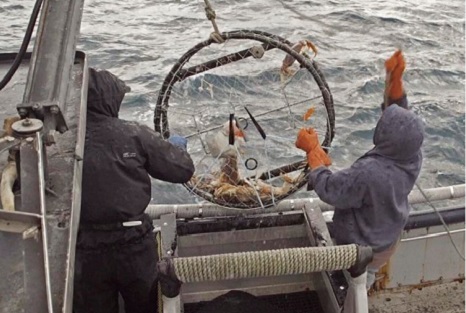
Dungeness crab season closure has ‘cut off a key economic lifeline to small coastal fishing communities’
A group of Oregon Dungeness crab fishers comprising nearly 10% of the state’s permitted commercial fleet sent an open letter this morning to the Oregon Department of Fish and Wildlife strongly criticizing the Department’s failure to open the Dungeness crab season along approximately half of Oregon’s coast in areas where crab have exceeded meat quality thresholds for several weeks. As the delayed opening enters its second month, the fishers’ letter describes in detail how the Department’s refusal to open the season has cut off a key economic lifeline to small fishing communities up and down the Oregon coast. The letter also takes sharp aim at the Oregon Dungeness Crab Advisory Committee, which the fishers describe as an “echo chamber” made up of special interests including major processors that benefit from lower prices that predominate after the end of the peak-demand holiday season, at the expense of mom-and-pop businesses and Oregon consumers. >click to read< 17:24


































